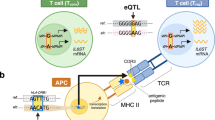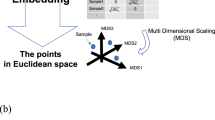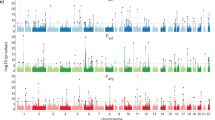Abstract
T lymphocytes are a major component of the adaptive immune system. CD4 positive T cell subpopulations regulate B cell and macrophage effector function while CD8 positive T cells are largely responsible for anti-viral cytotoxic activity. The degree of natural variation in the levels and ratios of the various T cell subpopulations is a possible risk factor for the development of autommune disease, infectious disease and cancer. There is some evidence from studies of inbred strains of mice and humans which suggests that variation in T cell subpopulations is genetically influenced. However, family studies alone cannot distinguish between common environmental and shared genetic influences and provide less robust estimates of the heritability than twin studies. To comprehensively examine genetic influences on a selection of important T cell phenotypes, we investigated variation in levels of total lymphocytes, CD3+, CD4+, CD8+, CD3+CD4+, CD3+CD8+lymphocytes and in CD4:CD8 ratio as a proportion of lymphocytes and of T cells using the classical twin model approach. Healthy female twin pairs were sampled from the St. Thomas’ UK Adult Twin Registry. A maximum of 103 monozygotic (MZ) and 186 dizygotic (DZ) twins aged 18–80 years participated in the study. Whole blood samples were analysed for T cell subsets by flow cytometry. The relative genetic contribution to these phenotypes was estimated using a variance components model-fitting approach. Heritability estimates were calculated of 65% for CD4:CD8 T cell and lymphocyte ratios, around 50% for absolute lymphocyte, CD3+ and CD4+ counts, and 56% for CD8+ numbers. Unique (rather than shared) familial environment explains the remainder of the variance. Genetic factors have a major influence on the variation in peripheral T cell subset numbers. Polymorphism dictating such variation should be taken into account when assessing risk factors for T cell immune-mediated disease with a genetic background.
This is a preview of subscription content, access via your institution
Access options
Subscribe to this journal
Receive 6 digital issues and online access to articles
$119.00 per year
only $19.83 per issue
Buy this article
- Purchase on Springer Link
- Instant access to full article PDF
Prices may be subject to local taxes which are calculated during checkout
Similar content being viewed by others
Author information
Authors and Affiliations
Corresponding author
Additional information
We are grateful to the Special Trustees of St Thomas’ Hospital and Gemini Genomics Limited for support in initiating this research. The Twin Research Unit also receives support from the Arthritis Research Campaign, the Wellcome Trust and the Chronic Disease Research Foundation. The experiments described in this paper comply with the laws of the United Kingdom.
Rights and permissions
About this article
Cite this article
Hall, M., Ahmadi, K., Norman, P. et al. Genetic influence on peripheral blood T lymphocyte levels. Genes Immun 1, 423–427 (2000). https://doi.org/10.1038/sj.gene.6363702
Received:
Revised:
Accepted:
Published:
Issue Date:
DOI: https://doi.org/10.1038/sj.gene.6363702
Keywords
This article is cited by
-
Carriers of the p.P522R variant in PLCγ2 have a slightly more responsive immune system
Molecular Neurodegeneration (2023)
-
Common variants of T-cells contribute differently to phenotypic variation in sarcoidosis
Scientific Reports (2017)
-
Genome-wide association study for T lymphocyte subpopulations in swine
BMC Genomics (2012)
-
Mapping quantitative trait loci for T lymphocyte subpopulations in peripheral blood in swine
BMC Genetics (2011)
-
Impact of MHC class II polymorphism on blood counts of CD4+ T lymphocytes in macaque
Immunogenetics (2011)



